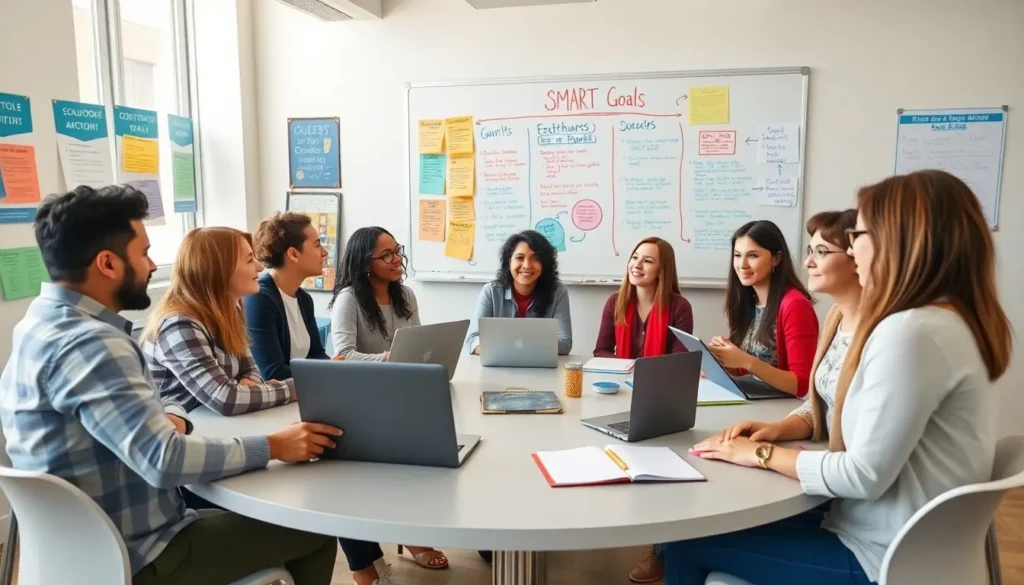In a world bursting with kale smoothies and yoga mats, cultural wellness often gets lost in the shuffle. But let’s face it—what’s a good stretch without a little rhythm? It’s time to embrace the vibrant tapestry of cultures that shape our lives, and trust us, it’s more refreshing than that overpriced green juice.
Table of Contents
ToggleUnderstanding Cultural Wellness
Cultural wellness embodies the integration of diverse cultural practices into one’s overall well-being. Recognizing its significance enriches individual experiences and fosters greater connections within communities.
Definition and Importance
Cultural wellness refers to the active engagement and appreciation of one’s cultural heritage and that of others. Its importance lies in enhancing self-identity, promoting inclusivity, and improving mental health. Individuals who embrace their cultural backgrounds often experience a stronger sense of belonging. Increased cultural awareness encourages empathy and understanding among different communities. Ultimately, cultural wellness plays a crucial role in creating harmonious societies.
Components of Cultural Wellness
Several key components contribute to cultural wellness. Engagement with cultural traditions allows individuals to connect with their roots. Celebrating cultural festivals promotes community bonding. Participation in diverse art forms encourages expression and creativity. Learning new languages can enhance communication and foster relationships. Additionally, culinary experiences offer opportunities to share heritage through food. Ultimately, each component plays an essential role in nurturing one’s cultural identity and improving overall well-being.
Benefits of Cultural Wellness
Cultural wellness offers numerous advantages, enriching individual lives and communities alike. Engaging with diverse cultures promotes connections that enhance social well-being.
Enhancing Community Connection
Joining local cultural events fosters community ties. Active participation in celebrations, such as festivals or art exhibitions, brings people together. Communities benefit when individuals share traditions and experiences, creating a sense of belonging. Embracing each other’s cultures nurtures mutual respect and collaboration. Increased cultural interactions lead to stronger support systems, improving overall community health. Engagement in cultural practices encourages dialogue, breaking down barriers that divide.
Fostering Personal Identity
Embracing one’s cultural heritage aids personal identity development. Individuals gain confidence by exploring their backgrounds, leading to a more authentic self-expression. One’s cultural roots provide a sense of purpose that enhances life satisfaction. Involvement in cultural activities, such as learning new languages or cooking traditional dishes, deepens self-understanding. Celebrating personal history cultivates pride and resilience. Through cultural exploration, individuals foster empathy and respect for others, enriching their personal journey.
Strategies for Promoting Cultural Wellness
Promoting cultural wellness involves specific actions that individuals and communities can take to meaningfully integrate cultural experiences into daily life.
Engaging in Cultural Activities
Engagement with cultural activities serves as a central strategy for enhancing cultural wellness. Participation in local festivals fosters community connections and appreciation for diverse traditions. Exploring traditional dances and music strengthens interpersonal relationships and promotes understanding. Attending art exhibits exposes individuals to various perspectives and enhances creative expression. Learning local languages not only facilitates communication but also deepens the understanding of different cultures. Cooking and sharing traditional dishes allows individuals to experience cultural heritage firsthand. These activities build a vibrant community atmosphere that encourages inclusivity and respect.
Building Supportive Environments
Supportive environments enhance cultural wellness by creating spaces where cultural expression thrives. Establishing community centers that host cultural events invites people from different backgrounds to share their traditions. Schools that incorporate multicultural curricula foster awareness and respect among students. Organizations encouraging employee resource groups enable individuals to connect over shared cultural experiences. Safe spaces for dialogue promote open conversations about cultural diversity and its impact on well-being. Building partnerships with local cultural organizations enhances access to resources and activities. These supportive measures cultivate a sense of belonging and strengthen community ties.
Challenges in Achieving Cultural Wellness
Cultural wellness faces several significant challenges. Understanding the nuances between cultural appropriation and appreciation proves essential for fostering authentic connections.
Cultural Appropriation vs. Appreciation
Cultural appropriation occurs when individuals or groups adopt elements of another culture without understanding or respecting the original context. This action often leads to misrepresentation and can marginalize the originating culture. In contrast, cultural appreciation emphasizes a respectful acknowledgment of different cultures. When individuals engage thoughtfully with diverse traditions, they celebrate and honor those cultures. To achieve true cultural wellness, communities must encourage appreciation while condemning appropriation. Providing educational resources can help clarify these distinctions and promote respectful engagement.
Barriers to Cultural Engagement
Barriers to cultural engagement present significant obstacles to achieving cultural wellness. Limited access to cultural events restricts participation for many individuals. People living in remote or underserved areas may lack opportunities to engage in diverse cultural activities. Language differences can also hinder meaningful interactions between cultures. Individuals who struggle with language may feel excluded from cultural conversations. Moreover, socioeconomic factors impact participation, as financial constraints prevent many from attending events or exploring different cultural practices. Overcoming these barriers requires community initiatives that offer accessible, inclusive, and affordable avenues for cultural engagement.
Cultural wellness is a vital component of overall well-being that deserves more attention in today’s health-focused society. By embracing diverse cultural practices individuals can enhance their sense of belonging and strengthen community ties. Engaging in cultural traditions not only enriches personal experiences but also fosters empathy and understanding among different groups.
As communities work to overcome barriers to cultural engagement it’s essential to promote appreciation over appropriation. This approach will lead to a more inclusive environment where everyone can thrive. Prioritizing cultural wellness paves the way for healthier individuals and more harmonious societies. Embracing this journey can transform lives and create connections that last a lifetime.









